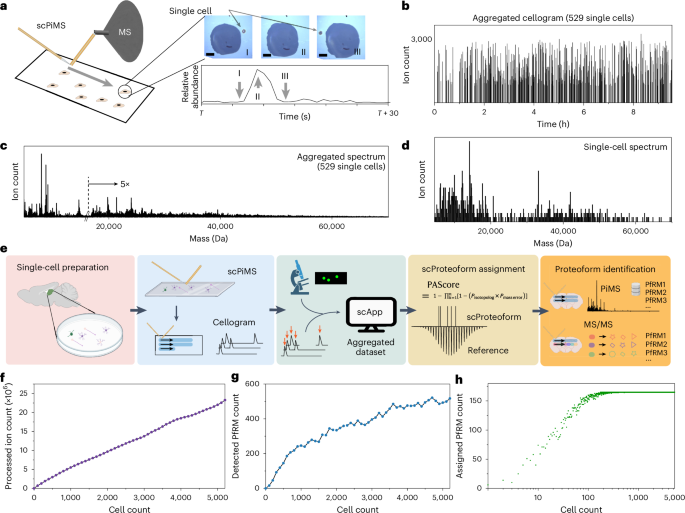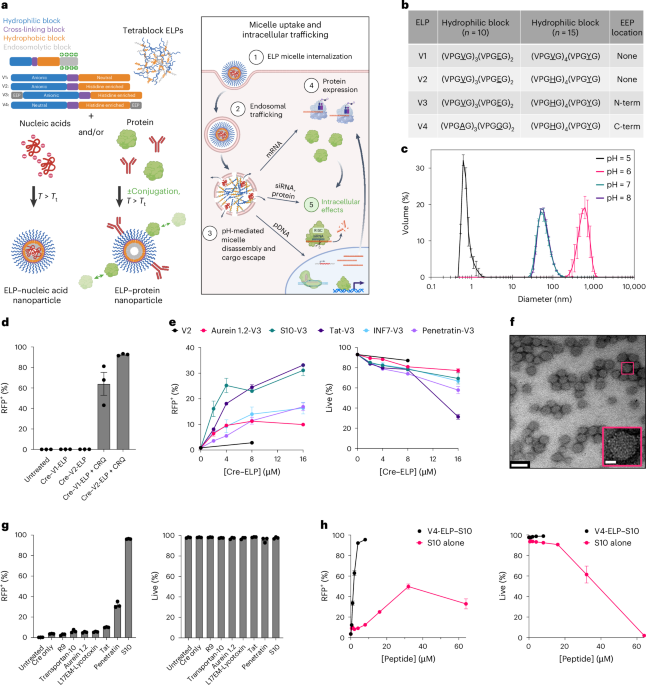Now Reading: Breakthrough in Single-Cell Proteoform Profiling from Rat Hippocampus
-
01
Breakthrough in Single-Cell Proteoform Profiling from Rat Hippocampus
Breakthrough in Single-Cell Proteoform Profiling from Rat Hippocampus

Swift Summary:
- A list of 165 identified proteoforms, associated .RAW files, adn processed single-cell data have been made available on MassIVE repositories under specific accession codes.
- Biological pathway databases for GSVA were retrieved from MSigDB at the Broad InstituteS website.
- The compiled scripts and software necessary to process I²MS files are accessible via GitHub on a dedicated repository link.
Indian Opinion Analysis:
The availability of high-quality research datasets and tools, such as those highlighted above, represents critically important progress in scientific openness and accessibility globally-and could inspire initiatives in India to expand open-access resources for local researchers.Encouraging Indian institutions to actively participate in such global repositories might bolster India’s standing in advanced fields like proteomics while enabling collaboration with international projects. Moreover, supporting technological growth catering specifically to Indian research priorities could pave ways for innovations contributing both locally and globally.
For more detailed data: Nature Article Link
Quick Summary:
- The raw text provided does not contain any information specific to India or Indian affairs. Instead, it references scholarly articles and studies focused on advancements in proteomics and single-cell analysis techniques using mass spectrometry.
- Mentioned citations include studies published in esteemed scientific journals such as Nature,Science,and Analytical Chemistry.
- The focus of the listed works is on identifying proteoforms, proteomics technologies, single-cell transcriptomics, visualizing biomarkers of diseases like cancer, and improving methodologies for molecular analysis.
Indian Opinion Analysis:
The provided text appears to be related to cutting-edge research in life sciences but lacks any mention of applications or context pertaining directly to India. Such innovations in proteomics could have potential implications for India’s biotechnology sector if adapted strategically-as an example, enhancing precision medicine or diagnosis within healthcare settings.Given India’s burgeoning pharmaceutical industry and academic ecosystem supporting biological sciences research, integrating similar technologies may bolster global competitiveness. However, as this data lacks specific reference to current Indian involvement or impact pathways, further exploration woudl be necessary.Read more: Google ScholarQuick Summary
- The input provided appears to reference various articles primarily focused on advancements and research in fields such as proteomics,single-cell analysis,mass spectrometry,neurobiology,and molecular imaging techniques.
- These studies encompass topics like high-sensitivity top-down proteomics applied to muscle cell heterogeneity (Melby et al., 2023), analysis of single mammalian cells via CE-MS/MS (Johnson et al., 2022), and lipid diversity in astrocytes and neurons (Neumann et al., 2019).
- Beyond cellular investigations, spatially-resolved methodologies have been utilized for proteomic profiling in brain regions (Delcourt et al., 2018).Other works explore neuronal milestones within the adult hippocampus or cell-type characterization across tissues using RNA-seq technologies.
Indian Opinion Analysis
India’s contribution to scientific research has increasingly focused on interdisciplinary domains that integrate biochemistry, molecular biology, and advanced analytical techniques. The highlighted research demonstrates global advancements that could inform similar efforts within India’s burgeoning biotechnology sector-especially given its growing emphasis on personalized medicine initiatives. Observing breakthroughs such as proteomic profiling or single-cell imaging may inspire collaborations aimed at improving diagnostics for neurological disorders or cancers prevalent in India. With adequate investment in infrastructure like mass spectrometry facilities and fostering international partnerships, India is well-positioned to leverage emerging methodologies described here for the benefit of human health globally.[Read more about this topic by visiting referenced links in the original dataset]Quick Summary:
- The article discusses advances in neuroscience research with a focus on brain development, astrocyte metabolism, and protocols for imaging tissues.
- References provided include studies on hippocampal neuronal development (Ref CR32), mammalian corticogenesis (CR33), dendrite branching (CR34), astrocyte responses during ischemia (CR35), and single-cell mass spectrometry techniques relevant to small molecule analysis in cells.
- Advances like the Human Proteoform Atlas providing proteoform data demonstrate strides in bioinformatics integration into neuroscience. Studies also focus on pathology image analysis tools like QuPath and NIH’s ImageJ software evolution over 25 years.
- Imaging methodologies such as nanospray desorption electrospray ionization mass spectrometry are highlighted for their high spatial resolution capabilities.
Links to PubMed, Google Scholar references are included for further reading into study details.
Indian Opinion Analysis:
The cited advances have potential implications for India’s scientific community by signaling opportunities to adapt cutting-edge tools in neuroscience research. Particularly valuable could be single-cell mass spectrometry techniques-central to understanding cellular processes-that could enable Indian institutes involved in drug design or neurodegenerative disease studies to achieve more precision at reduced scales of experimentation.
Moreover, resources such as pathology image analysis tools showcased (QuPath) can bolster medical diagnostics across government health schemes like Ayushman Bharat if integrated effectively into broader public health frameworks. Continuous innovation using imaging and proteomic approaches will likely set benchmarks India can strive towards replicating within emerging R&D ecosystems.
While robust funding remains indispensable, collaboration with global institutes leveraging open-access resources ensures inclusive growth where expertise meets applicability locally.
Explore original references here: PubMed.Quick Summary:
- Researchers have developed a scalable approach to single-cell proteomics using intact protein sampling based on individual ion mass spectrometry (I²MS).
- The study involved the analysis of 5,272 cells from the rat hippocampus, enabling complete profiling of proteoforms.
- Analytical techniques used included nanospray desorption electrospray ionization mass spectrometry and advanced ion tracking software.
- A total of 165 proteoforms were identified under specific experimental conditions within the hippocampal region.
- Principal component analysis was utilized for cell type classification, revealing distinct pathways associated with neurons, astrocytes, and microglia.
- Funding for this research came from institutions including NIH and Chan Zuckerberg Biohub Chicago.
Source Data Image. Full details on methodologies are available through multiple databases: CAS, PubMed Central & Google Scholar references linked in article.
—
Indian Opinion Analysis:
This breakthrough in single-cell proteomics marks significant progress in high-resolution biological imaging that could set the foundation for future diagnoses and therapeutic development. The use of I²MS technology enables deeper insights into protein activity at a cellular level-a promising advancement for neuroscience studies worldwide as well as potential translational applications.
For India’s scientific community, adopting such methods could bolster its strides in biomedicine and precision diagnostics. For example,applying these tools across neurodegenerative disease studies or cancer research could localize treatment strategies-a critical priority amid India’s rising health demands. Collaborative frameworks between Indian labs and international networks like Chan Zuckerberg Biohub might amplify scalability while accelerating technological adaptability locally.
These advancements highlight how embracing cutting-edge methodologies could elevate India’s position within global biomedical innovation ecosystems without directly altering national focus areas already present-equipping higher applicability aligned needs trending domains effectively Scale-ready mapping-tech read unique enzymes layerstranslate molecover diagnostic-pluses human-level practical Challenge outcomes shifts transitional paths align-millennium confidently intersection modernization forefront scientific-waves “Synergies change societal-direct division lab-connectivity arena decisive-leads technical cross-output stage shift emerges further.”.
Read moreQuick Summary
- The text discusses proteoform profiling of endogenous single cells sourced from the rat hippocampus utilizing advanced spectrometry techniques.
- Mass spectra for monoacetylated ARP5L proteoforms were reconstructed from varying numbers (50, 100, 200, and 300) of single neurons demonstrating theoretical isotopic distribution patterns.
- Individual ion mass spectra analyzed from specific single neurons identified distinct monoacetylated ARP5L proteoforms with PAScores provided for neuron samples #784, #1247, and #605.
- Proteoform detections involved in glucose metabolism and astrocytic markers (GFAP) revealed elevated PAScores in astrocytic populations.
- Related proteoforms tied to HIV interaction processes showed higher PAScores in microglial populations across cell types.
Indian Opinion Analysis
This study on proteoform analyses provides intricate data into cellular-level mechanisms via modern spectrometry methods. While centered on rat neuronal systems, such research could guide similar methodologies within India’s biomedical sector.Understanding protein modifications at such granular levels may illuminate potential paths for addressing degenerative diseases or infection-related conditions like HIV. This highlights the significance of interdisciplinary approaches marrying advanced technology with biology-a scientific frontier India could proactively invest in to bolster healthcare innovations and academic collaborations globally.
Read more: Nature Article LinkQuick Summary
- researchers led by Su, P., Hollas, M.A.R., and Pla published a study in Nature Biotechnology exploring proteoform profiling of single cells in the rat hippocampus.
- The article details advancements in scaling endogenous single-cell proteoform analysis to understand biochemical variations across individual cells.
- Received on July 3,2023,the study was accepted on April 4,2025,and officially published on May 15,2025.
- DOI for reference: https://doi.org/10.1038/s41587-025-02669-x.
Indian Opinion Analysis
The study represents a technical leap in cellular-level analysis with potential applications in neuroscience and drug development. For India-where ongoing efforts are aimed at ramping up life sciences research-the approach could offer collaboration opportunities for labs specializing in personalized medicine or neurological disorders like alzheimer’s disease. Strengthening inter-university partnerships or international collaborations may help Indian researchers access cutting-edge technologies like this one to catalyze breakthroughs tailored to regional medical needs. Investments into such frontier fields can also bolster India’s biotechnological capabilities globally.






















